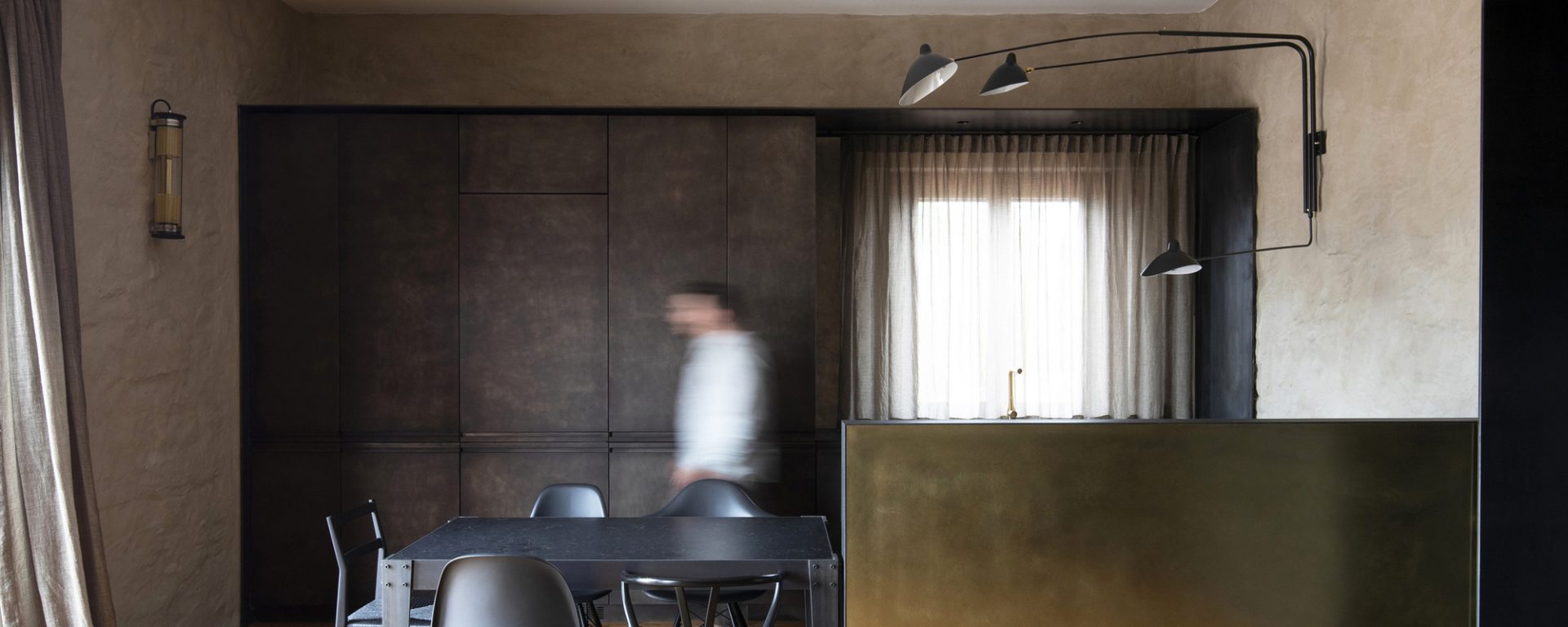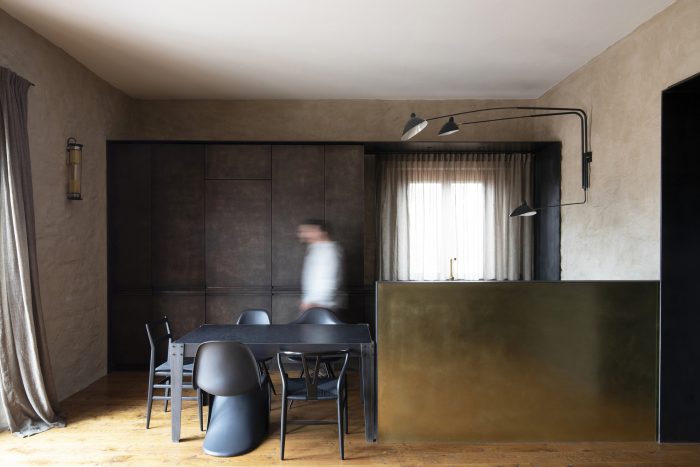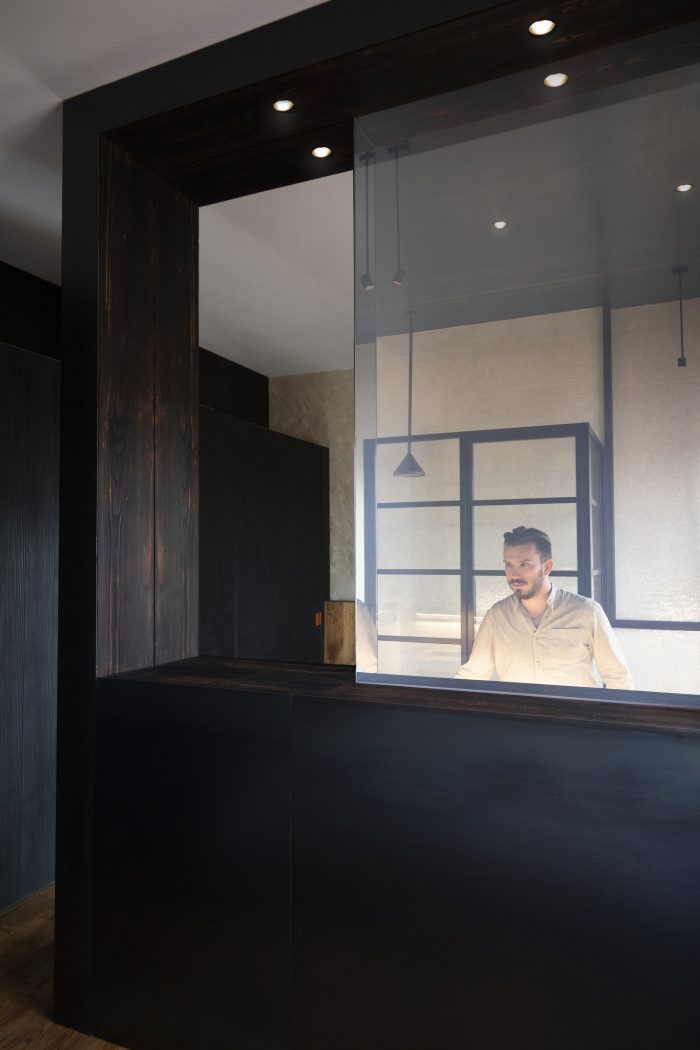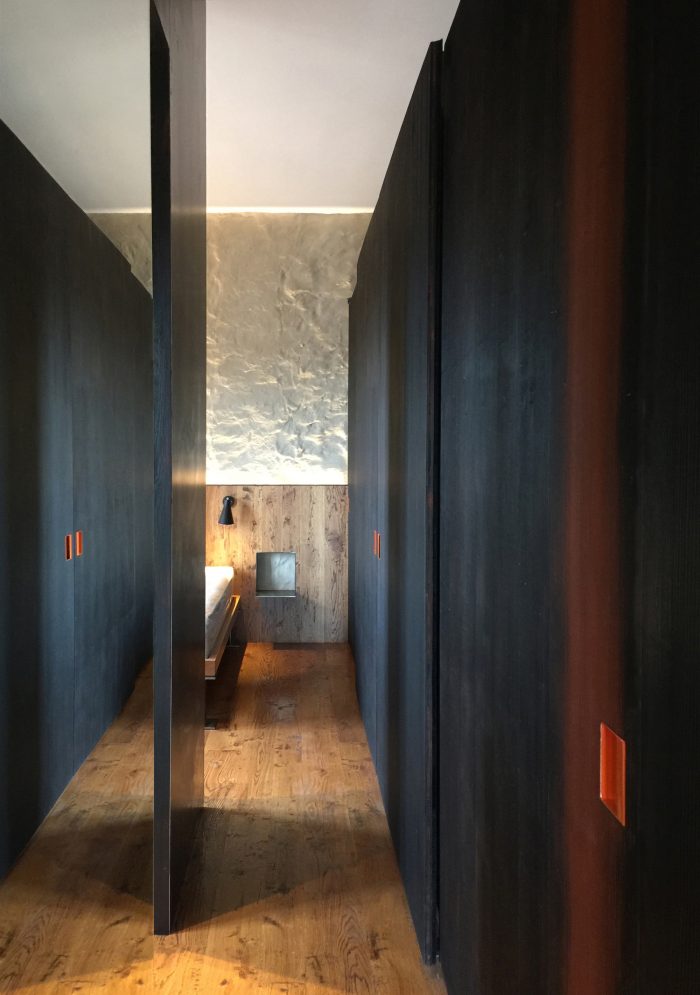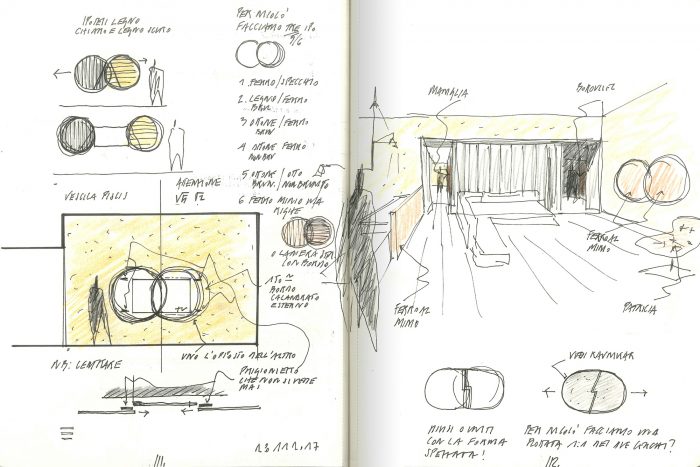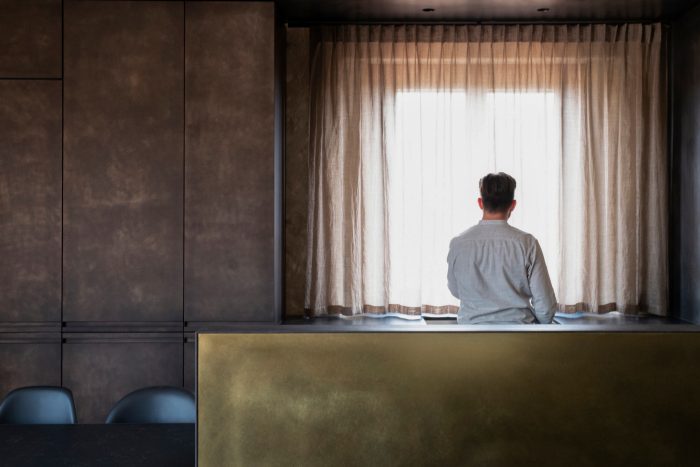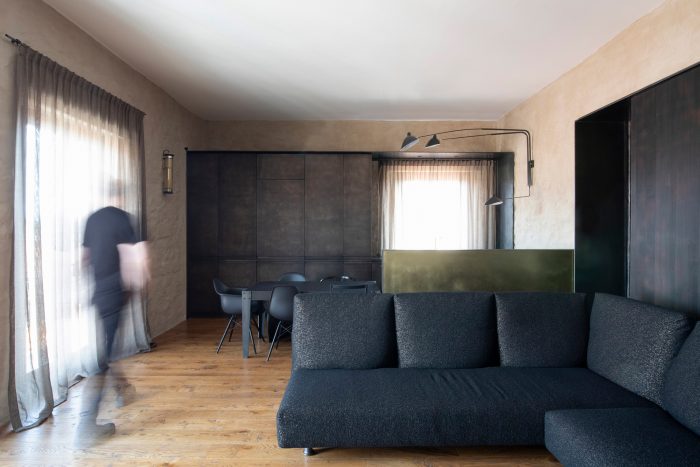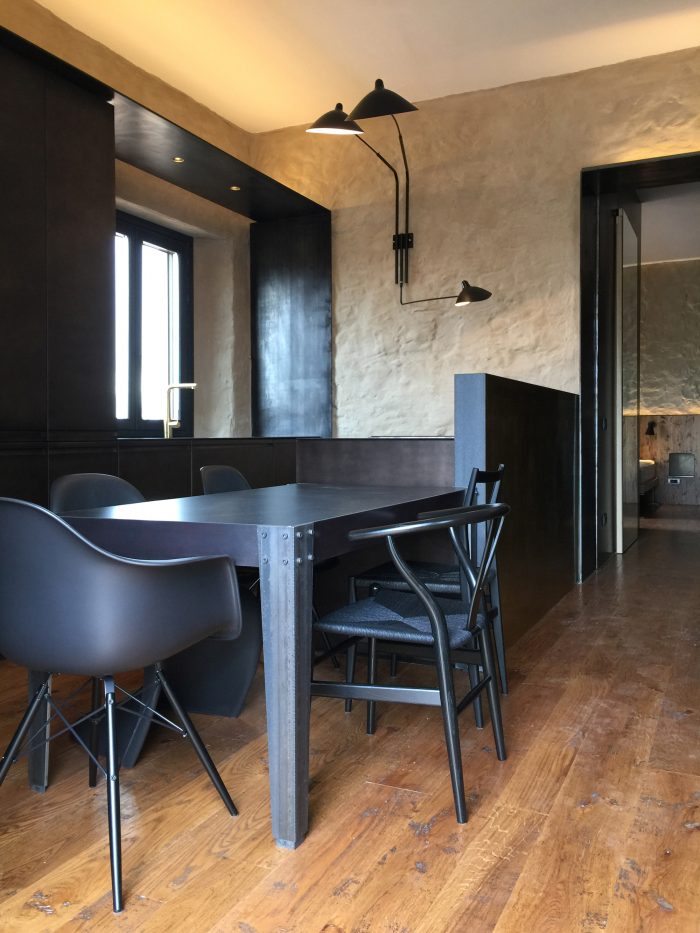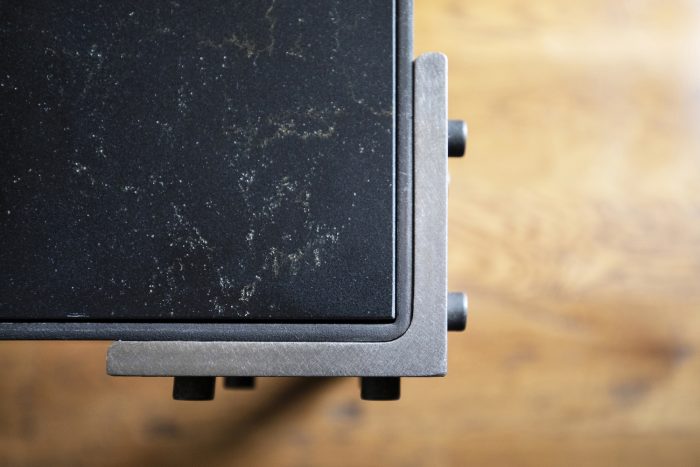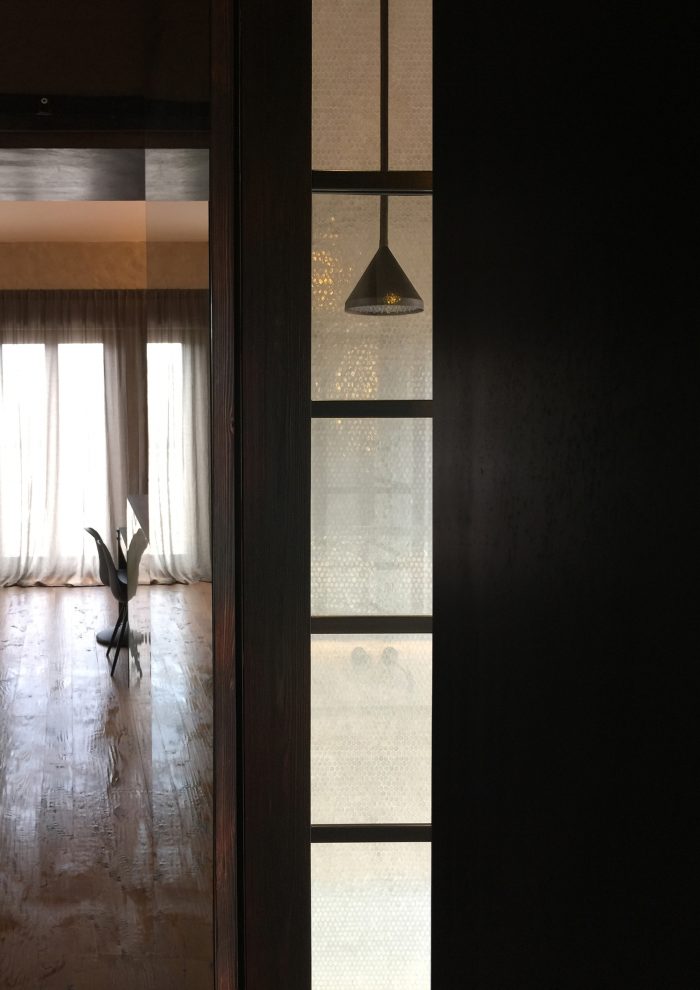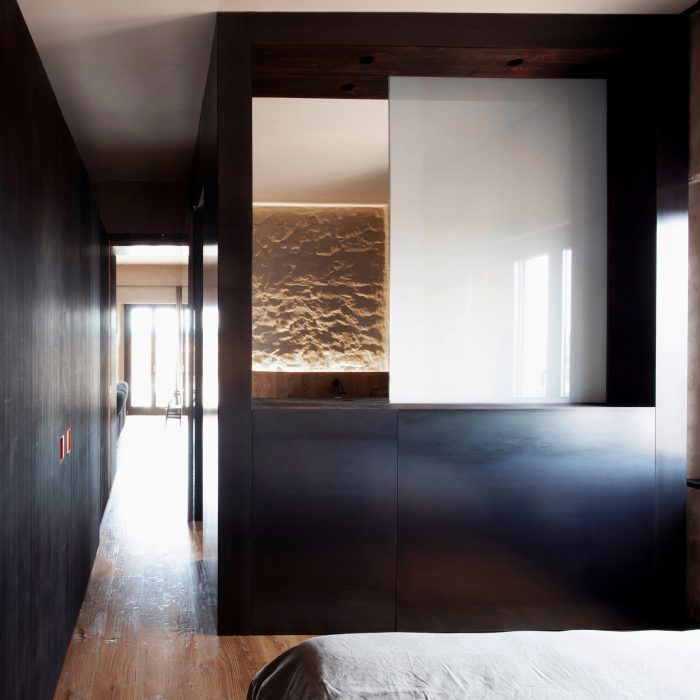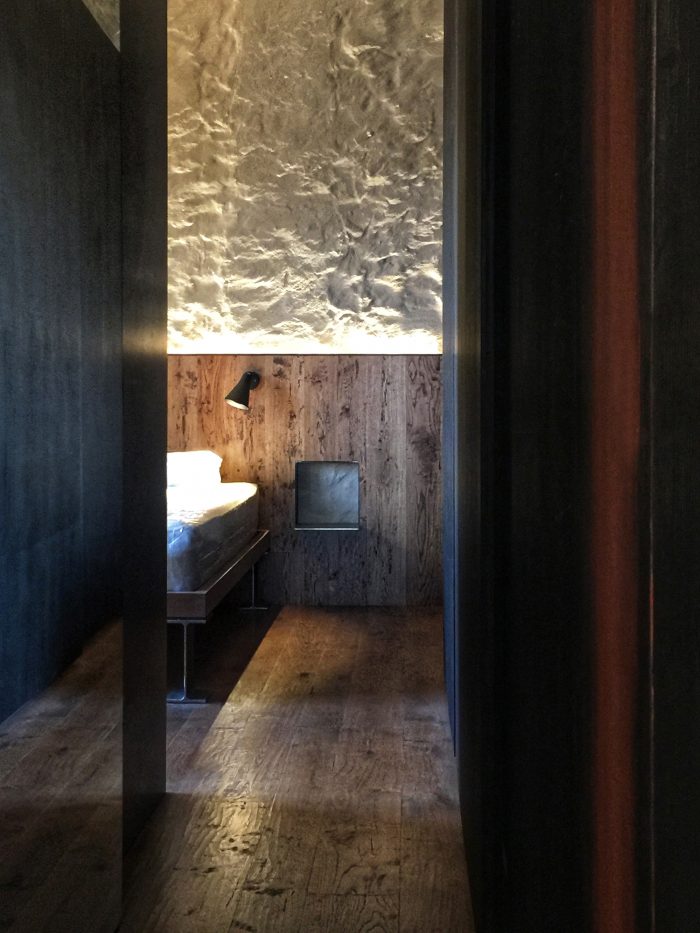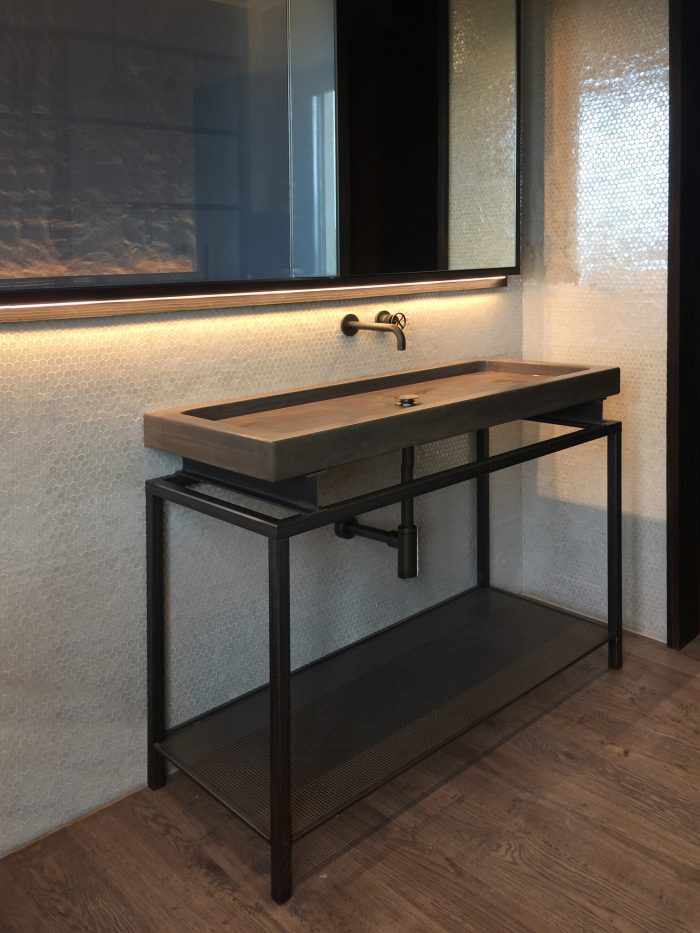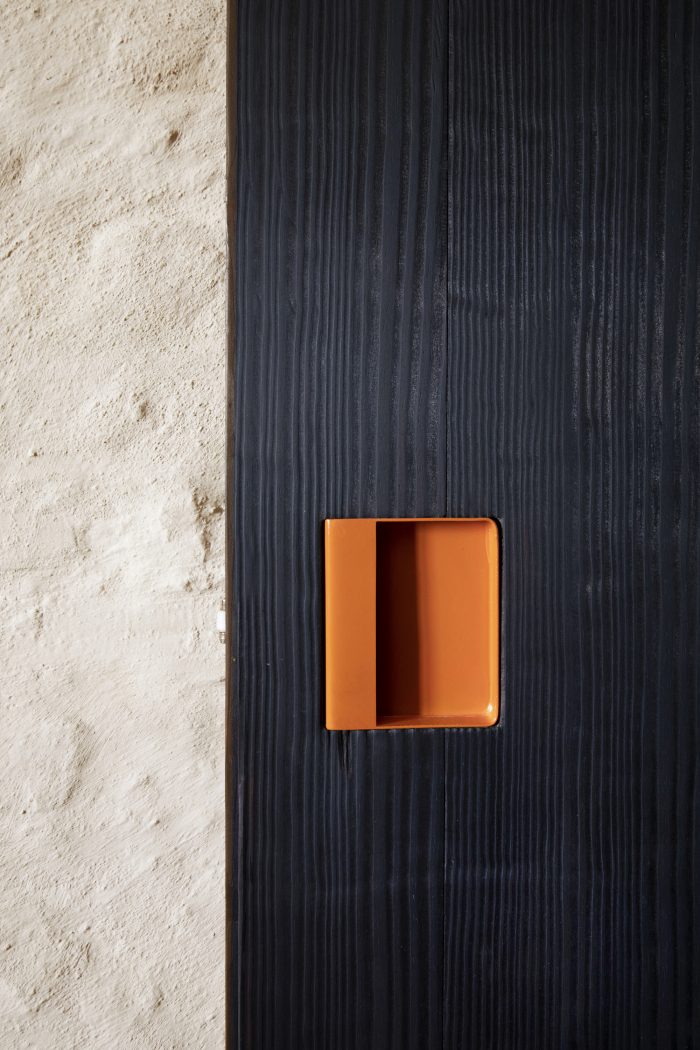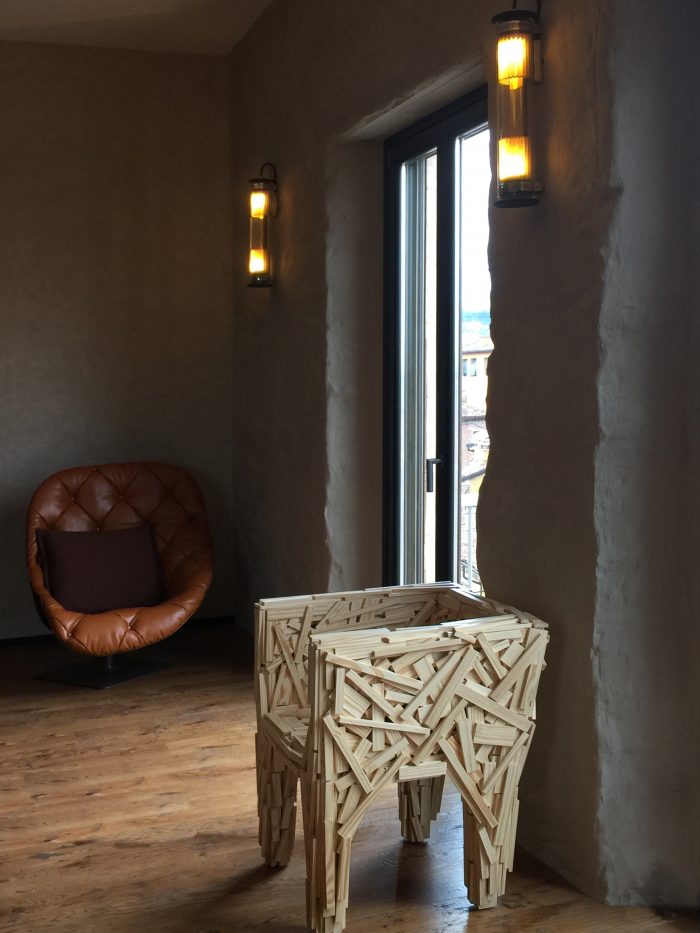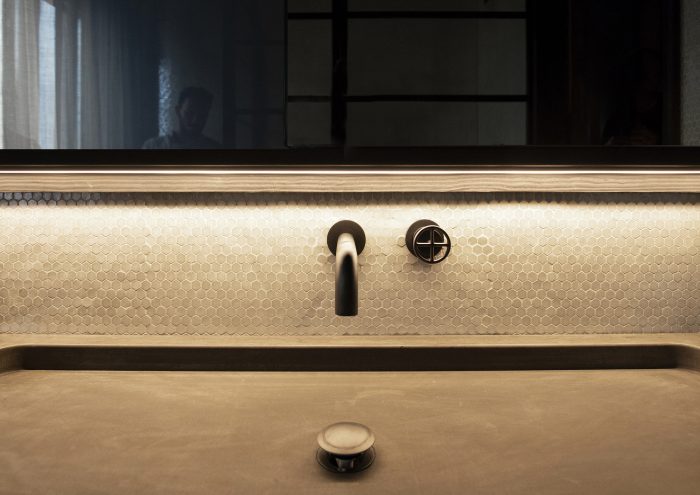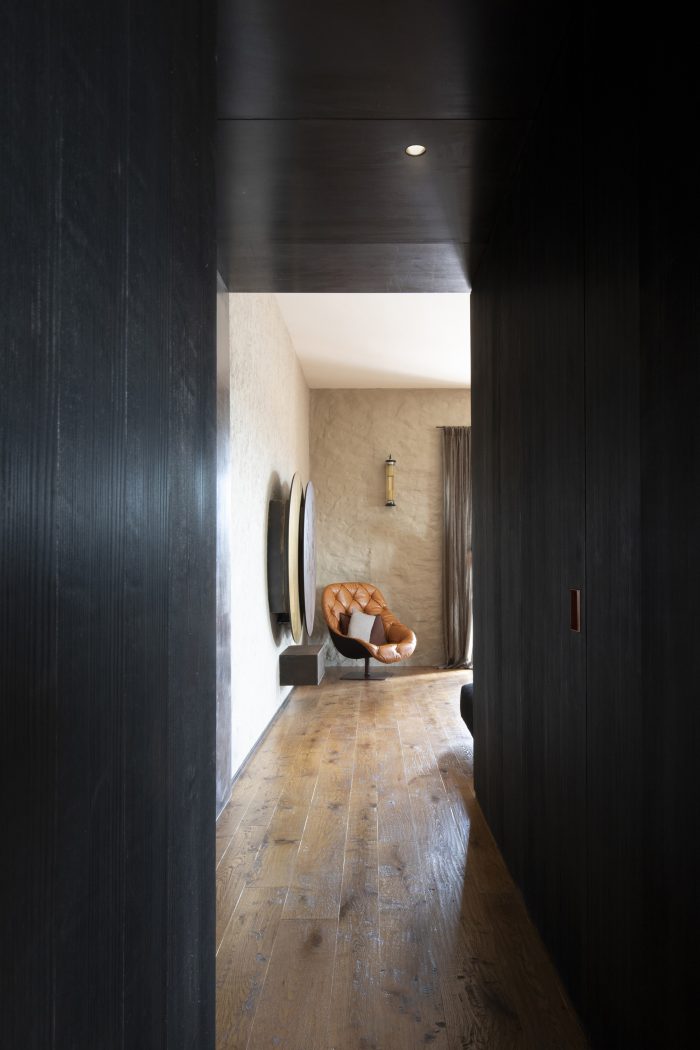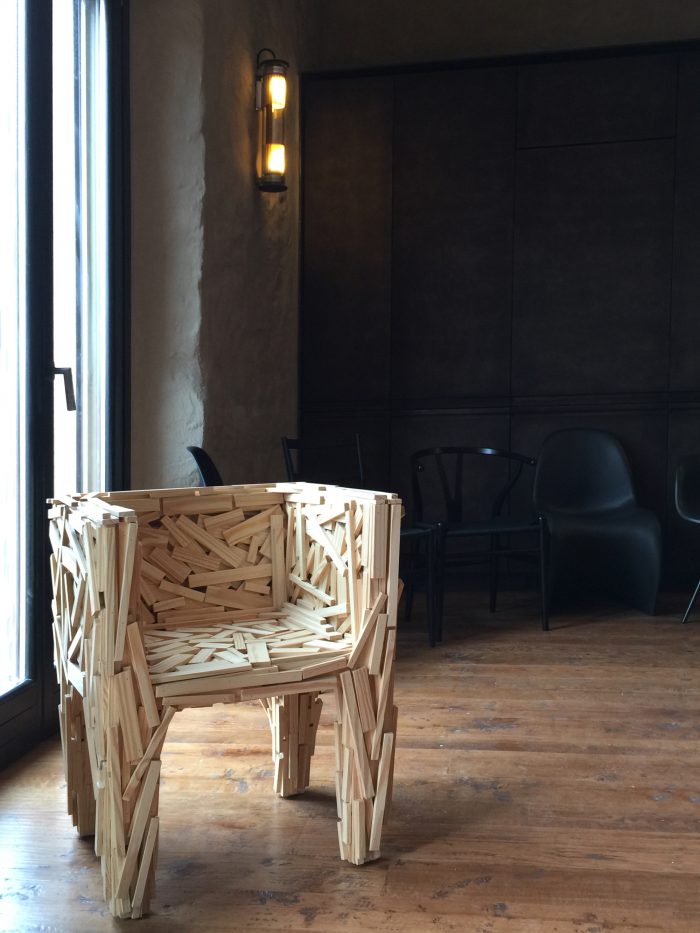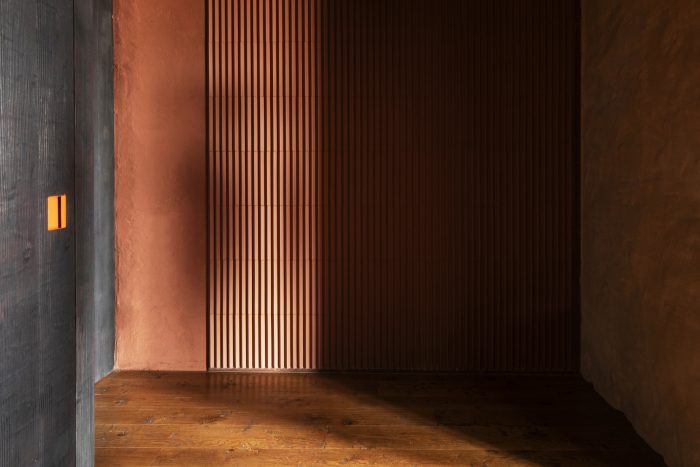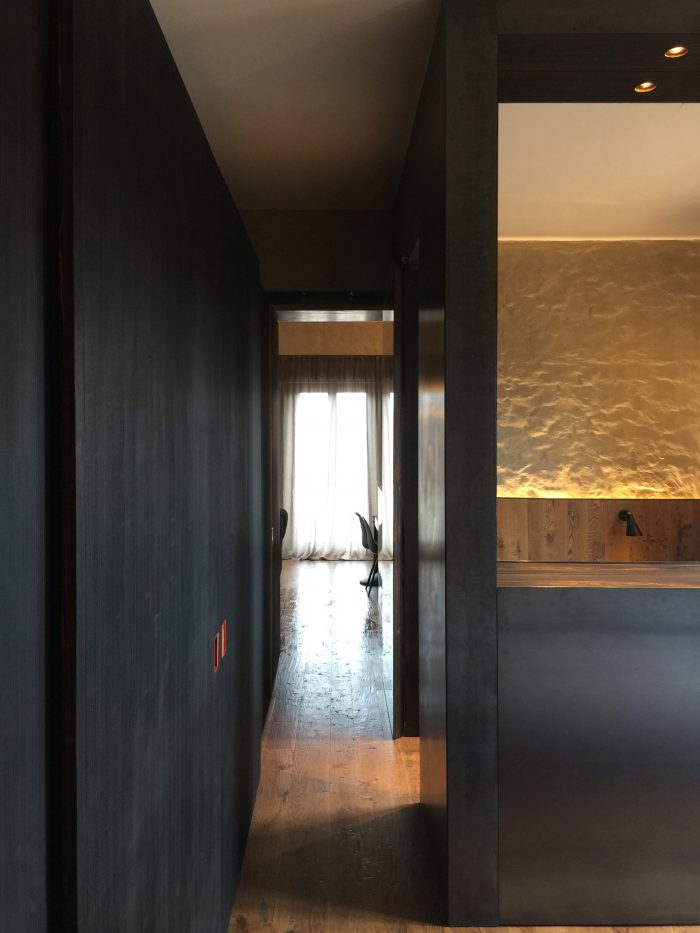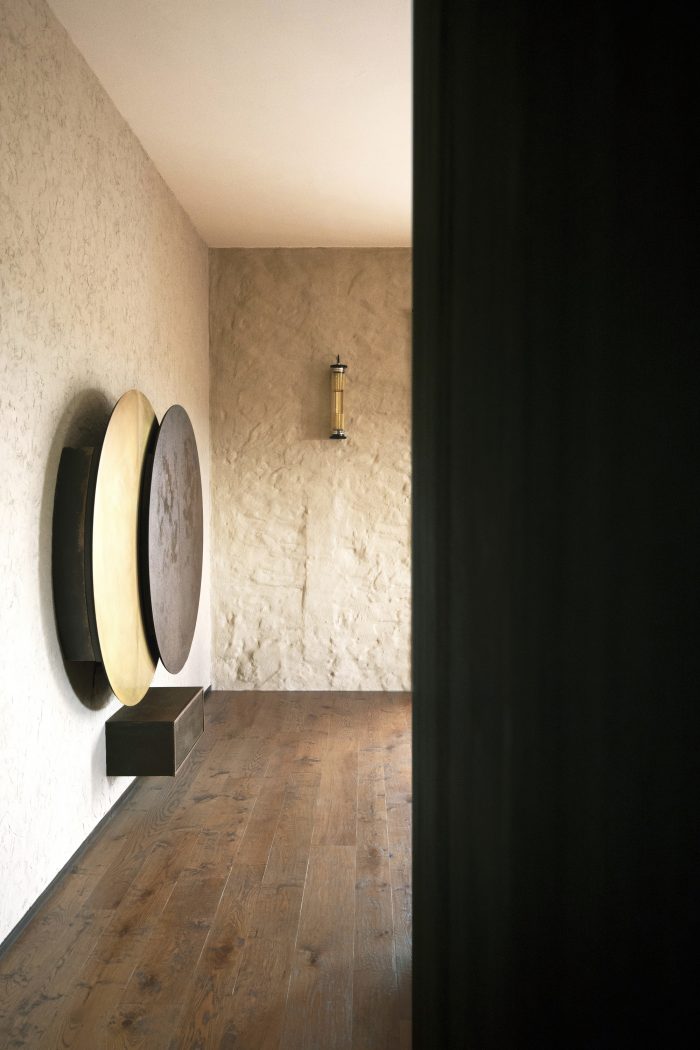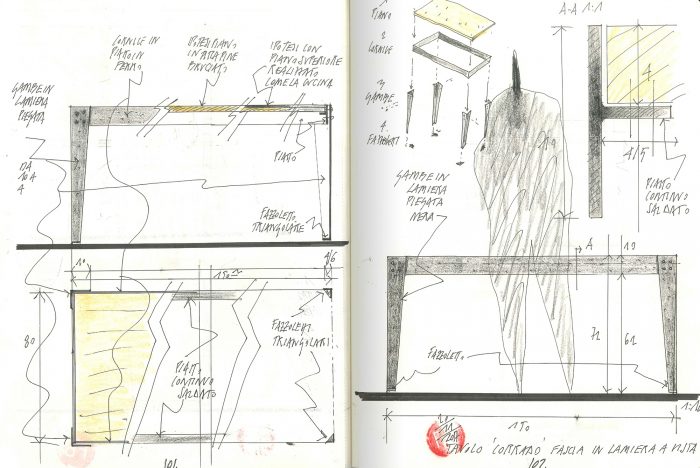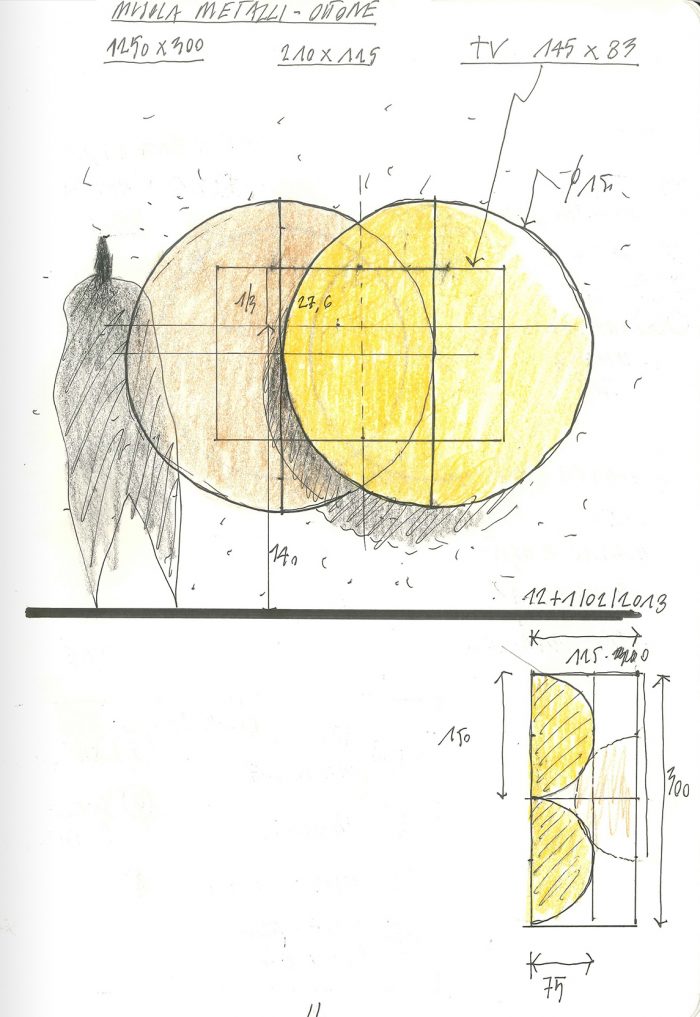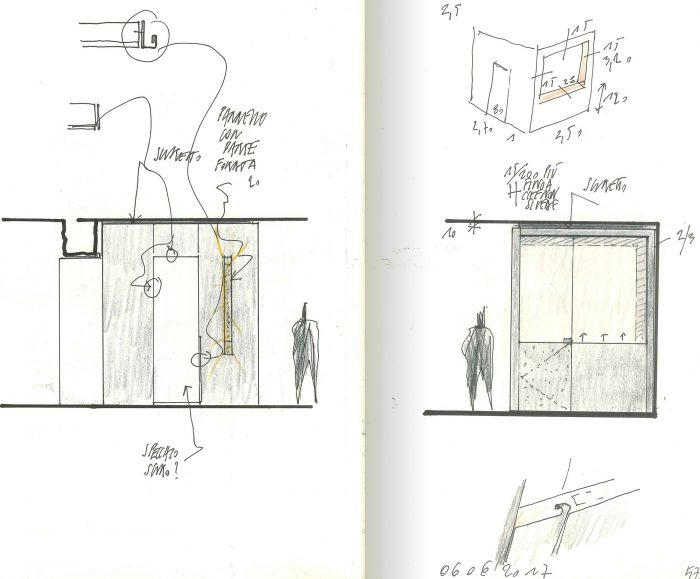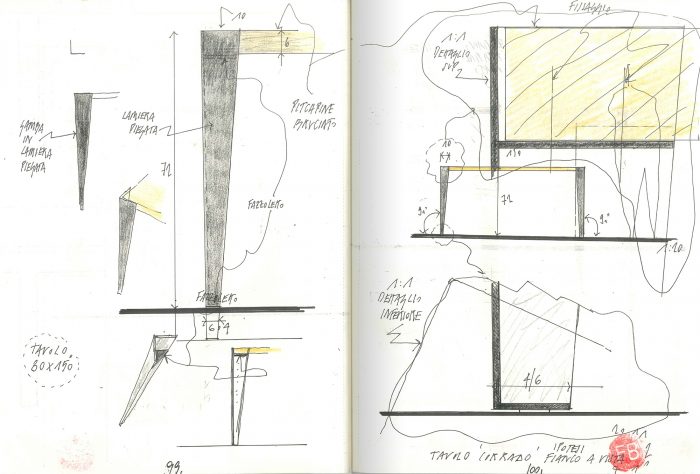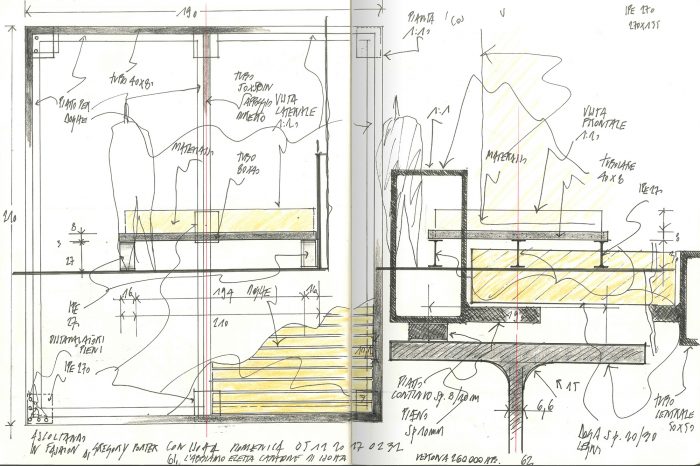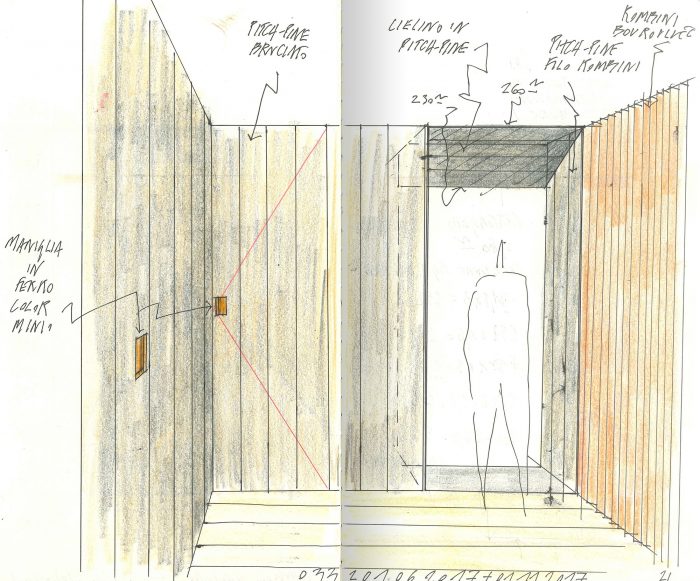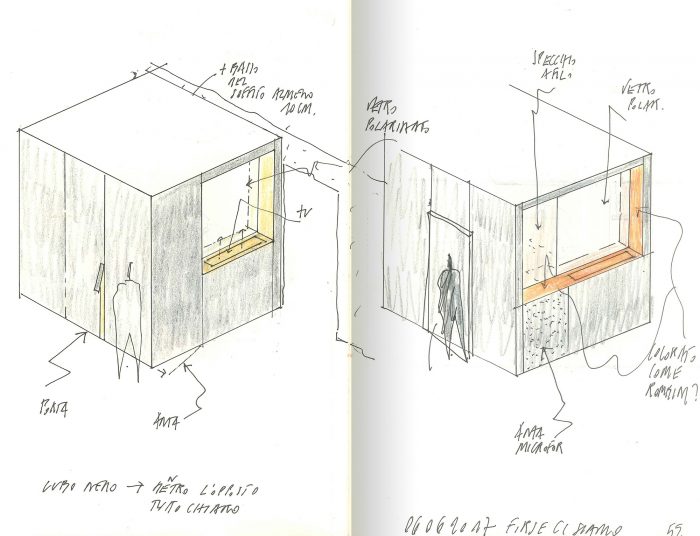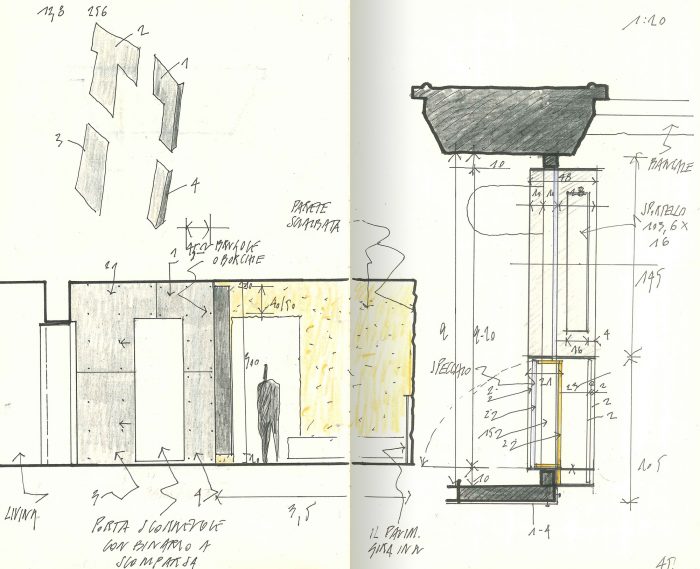在我们的设计项目中,恢复一个空间或一个建筑总是意味着在原有的结构中找到新的开始的提示。这不是一件容易的事。你需要超越表象。你需要检查和消除层次。有时,你需要身体力行。位于维罗纳老城区中心的维罗纳阁楼的修复工程就是如此。
In our design project, to recover a space or a building always means to find in the preexisting structure the prompts for a new beginning. It is not an easy task. You need to look beyond appearances. You need to inspect and remove layers. Sometimes, you need to do that physically. This was the case for the restoration of the Verona Penthouse in the old town center of Verona.
我们首先拆除了所有的灰泥。我们在寻找一些真实的、坚固的东西。我们在寻找文物的过去,为未来寻找一些遗迹,我们在那里找到了它们。把石膏去掉,一个美丽的粗犷的砖石就重新浮现在眼前。仅仅是看石工,我们就知道它不是要放在明处的。它是不完美的,不精确的,但正因为如此,它是真实的,是由那些可怜的东西在真实的时候(而不是错位的叙事权宜之计的不幸结果)的谦逊和优雅的表现力所雕刻出来的。
We first demolished all of the plasters. We were looking for something true, something strong. We were looking at the past of the artifact to find some remnants for the future, and there we found them. By removing the plasters, a beautiful rough masonry resurfaced. Just by looking at the stonework, we could tell it was not meant to be left in plain view. It was imperfect, inexact but, for this very reason, authentic, carved by the humble and elegant expressivity of the poor things when they are true (and not the unfortunate result of misaligned narrative expedients).
在腾出的空间里,石雕的蛮力促使我们对功能方案进行激进的建筑学翻译。我们没有在砖石结构的空间内建造新的墙壁。相反,我们在新的类似于移植物的装置内将功能程序进行了比较化。因此,原有的墙体与新的元素进行了激烈的对话,新的元素使用了高度真实的材料,能够与石头的诗意的粗糙感相融合。
In the freed space, the brutal force of the stonework pushed us to radicalize the architectonic translation of the functional program. We did not build new walls within the space structured by the masonry. Rather, we compartimentalized the functional program inside new grafts-like devices. Thus, the original walls entered into an intense dialog with the new elements, which were crafted using highly authentic materials capable of engaging with the poetic roughness of the stone.
一条黑松木(迷你色和烧焦的)从低矮的入口处穿过空间,从起居室向下滑动,构成卧室的一侧。在它的内部,我们发现客人的厕所,洗衣房,和卧室的衣柜。表面没有间断,原本难以辨认的开口只用一些我们自己设计的读引把手来标记。
A pitch-pine boiserie(minium-colored and burnt) crosses the spaces from the lowered entrance down the living and slides along to constitute a side of the bedroom. Inside it, we find the guest toilet, the laundry room, and the bedroom wardrobes. The surface is uninterrupted and the otherwise indiscernible openings are marked only by some read-lead handles of our own design.
主人的卧室厕所被刻在一个黑色的、没有颜色的、用鞋油处理过的金属板卷内。体积呈现出不同的计谋:在床的方向,一个大开口被一面镜子和一块偏光玻璃模糊地分割开来,这可以阻碍或提供一个窥视浴室的视角。朝着卧室,一个活塞式的遥控器让一个隐藏的电视机上场。最后,门被一面镜子遮住了,这使得音量和舞池之间的运动更加神秘。起居室的入口墙上,两个略微重叠的圆圈标志性的存在。它们使用不同的金属(黄铜和老铁)制作。这个装置的目的也是为了掩盖电视的侵犯性。事实上,当手动操作时,一个滑动装置将电视屏幕带入视野。
The host bedroom toilet is inscribed within a black, uncolored, sheet metal volume treated with shoe polish. The volume presents different ploys: towards the bed, a big opening is ambiguously divided by a mirror and a polarized glass, which can hamper or offer a voyeuristic view of the bathroom. Towards the bedroom, a piston-driven remote control allows a hide-away TV set to come on stage. Finally, the door is concealed by a mirror that renders the movement between the volume and the boiserie all the more enigmatic. The entrance wall of the living is marked by the iconic presence of two slightly overlapping circles. They were made using different metals (brass and aged iron). This device too aims to conceal the invasiveness of the TV. Upon manual operation, in fact, a sliding mechanism brings the TV screen into view.
其他元素的特点是在叙事上打破了普通的方法,并在建筑设计中进行了重新解释:一个铁门结构了客厅的后墙,并包含了一个金属厨房,并进行了抛光的黄铜装饰。降低部分的假天花板采用黑色天然铁板。定制家具(桌子、水槽、床)采用工业金属型材开发,有明显的连接。
Other elements are characterized by a similar tendency to narratively break away with ordinary approaches and reinterpretations in architectural design: an iron gate structures the living back wall and contains a metal kitchen with burnished brass finishing touches. The false ceilings of the lowered parts are in black natural iron plates. Custom furnishings (tables, sinks, beds) are developed using industrial metallic profiles with visible joins.
建筑师:Bricolo Falsarella
年份:2019年
制造商:Fantini、Serge Mouille、RA、XERA。
首席建筑师:Filippo Bricolo
设计团队:Francesca Falsarella, Elisa Bettinazzi, Nicolò Garonzi。
客户:私人
合作者:Forme di Luce
城市:维罗纳
国家:意大利Architects: Bricolo Falsarella
Year: 2019
Manufacturers: Fantini, Serge Mouille, RA, XERA
Lead Architect:Filippo Bricolo
Design Team:Francesca Falsarella, Elisa Bettinazzi, Nicolò Garonzi
Clients:Private
Collaborators:Forme di Luce
City:Verona
Country:Italy

